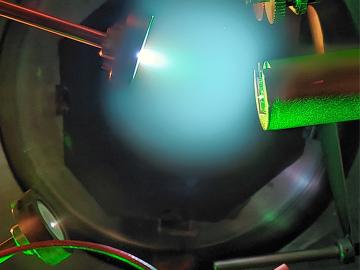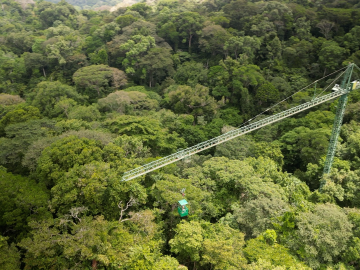
Filter News
Area of Research
- Advanced Manufacturing (1)
- Biology and Environment (32)
- Computational Biology (1)
- Computational Engineering (2)
- Computer Science (6)
- Electricity and Smart Grid (1)
- Energy Science (61)
- Functional Materials for Energy (1)
- Fusion and Fission (9)
- Fusion Energy (7)
- Isotopes (7)
- Materials (32)
- Materials for Computing (6)
- Mathematics (1)
- National Security (6)
- Neutron Science (34)
- Nuclear Science and Technology (6)
- Quantum information Science (1)
- Supercomputing (19)
- Transportation Systems (2)
News Type
News Topics
- (-) Artificial Intelligence (33)
- (-) Biomedical (18)
- (-) Environment (67)
- (-) Fusion (19)
- (-) Isotopes (15)
- (-) Neutron Science (42)
- (-) Physics (11)
- (-) Security (4)
- (-) Summit (11)
- (-) Transportation (52)
- 3-D Printing/Advanced Manufacturing (57)
- Advanced Reactors (18)
- Big Data (26)
- Bioenergy (26)
- Biology (31)
- Biotechnology (6)
- Buildings (31)
- Chemical Sciences (31)
- Clean Water (14)
- Composites (16)
- Computer Science (70)
- Coronavirus (15)
- Critical Materials (13)
- Cybersecurity (9)
- Emergency (2)
- Energy Storage (50)
- Exascale Computing (11)
- Fossil Energy (1)
- Frontier (10)
- Grid (28)
- High-Performance Computing (33)
- Hydropower (6)
- Irradiation (3)
- ITER (5)
- Machine Learning (19)
- Materials (70)
- Materials Science (54)
- Mathematics (3)
- Mercury (3)
- Microscopy (21)
- Molten Salt (6)
- Nanotechnology (25)
- National Security (13)
- Nuclear Energy (36)
- Partnerships (11)
- Polymers (15)
- Quantum Computing (9)
- Quantum Science (18)
- Simulation (16)
- Software (1)
- Space Exploration (11)
- Statistics (1)
Media Contacts

Oak Ridge National Laboratory researchers are using a new bioderived material to 3D print custom roosting structures for endangered bats.

Researchers led by the University of Melbourne, Australia, have been nominated for the Association for Computing Machinery’s 2024 Gordon Bell Prize in supercomputing for conducting a quantum molecular dynamics simulation 1,000 times greater in size and speed than any previous simulation of its kind.

ORNL researchers were honored with a prestigious ACE Award for Composites Excellence by the American Composites Manufacturers Association. The team won the “innovation in green composites design” prize for creating a fully recyclable, lightweight wind turbine blade tip that incorporates low-cost carbon fiber and conductive coating for enhanced protection against lightning strikes.

In a game-changing study, ORNL scientists developed a deep learning model — a type of artificial intelligence that mimics human brain function — to analyze high-speed videos of plasma plumes during a process called pulsed laser deposition.

Three transportation researchers at the Department of Energy’s Oak Ridge National Laboratory have been elevated to senior member grade of the Institute of Electrical and Electronics Engineers, or IEEE.

ORNL’s Matthew Loyd will receive a Department of Energy Office of Science Early Career Research award.

Scientists using high-resolution aerial scans and computational modeling concluded that wildfires, storms and selective logging have become key drivers behind rainforest carbon emissions, outpacing clear-cutting practices.

ORNL has partnered with Western Michigan University to advance intelligent road infrastructure through the development of new chip-enabled raised pavement markers. These innovative markers transmit lane-keeping information to passing vehicles, enhancing safety and enabling smarter driving in all weather conditions.

A research scientist with the Department of Energy’s Oak Ridge National Laboratory, Ayana Ghosh was named the 2024 Early Discovery Award winner by the American Ceramic Society. The award recognizes an early career member of the organization who has contributed to basic science in the field of glass and ceramics.

The award was given in “recognition of his lifelong leadership in fusion technology for plasma fueling systems in magnetically confined fusion systems.”


